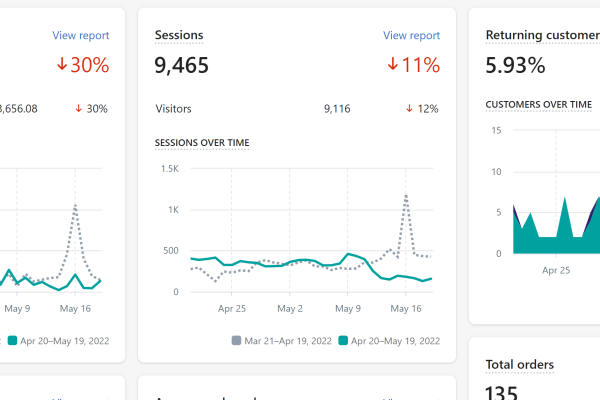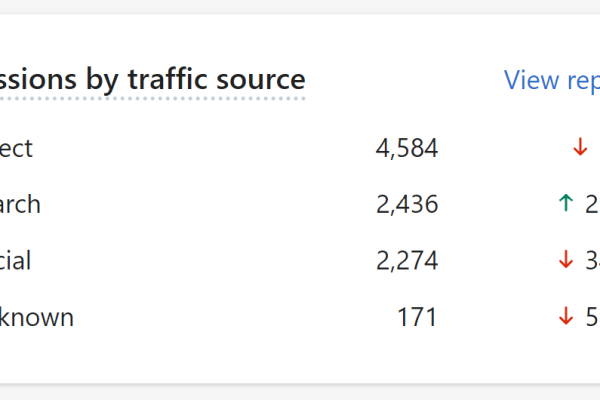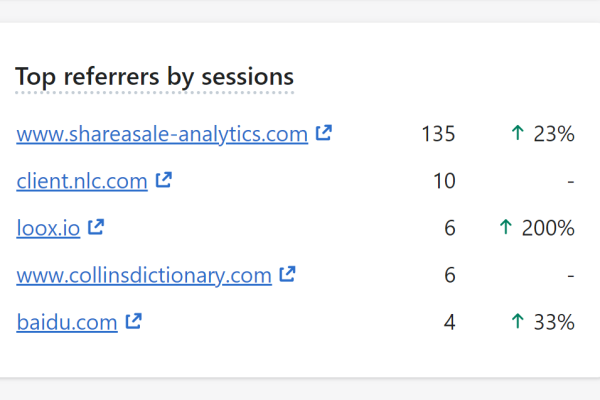Some links on this post may link to affiliate pages that offer compensation to the author of this post.
Did you know that between 80 and 90% of online e-commerce websites fail within the first year? Have you wondered if there is a way to prevent your Direct-to-Consumer business idea from becoming another part of that statistic? Shopify is one of the most popular e-commerce platforms in the world. With over 30% of the e-commerce technology share, many people wonder if Shopify can be a way to overcome the traditional hurdles of selling products and services online.
So today I want to go over the Pro’s and Con’s of Building your Website with Shopify and help you determine if its a good platform for you.
Is Shopify still a good ecommerce solution? Should You Make the Switch? What are the Benefits? What are the disadvantages?
The Benefits of Using Shopify For Your Website
There are a lot of benefits to using Shopify. Most pages will already have told you about the 2-week free trial or the very user-friendly user dashboard. But as someone who has worked on many different websites and platforms, there are a couple of big game changers that really set Shopify above the rest.
- The best analytics dashboard and tracking in the e-commerce business.
- Quick Setup and Launch
- Little to no web maintenance is required.
- Low Initial Setup Costs and a great outline for scalable growth.
I’ll be touching on each of these benefits throughout. Click above on the links to go directly to that section. But I promise to make my content fair so I have to be honest, there are some negatives to Shopify as well.
- Shopify Automation Flow is not included in the base plan.
- Limited Customization
- Easy to start, not easy to grow.

So lets get into it. What are the Pros and Cons of using Shopify? Let’s start with the Pro’s
Shopify has the Best Analytics Dashboard and Tracking in eCommerce, seriously.
Data and Insights about user behavior are the modern equivalents to gold and boy does Shopify have amazing Data and Insights. Ever since the release of IOS 13, knowing where your users are coming from and where they are going is an extreme hassle.
But Shopify is one of the only players in the e-commerce space that is able to sidestep this problem. Why? Because all the data is shared between the apps and with you. Most e-commerce sites rely on the data the user gives YOU, but shopify is built with the data they willingly give to other platforms like Google, Facebook, Instagram, Twitter, and TikTok. And with a free and simple integration, Shopify is easily the best at analytics.
As a web designer and data analyst, I cannot tell you how much more efficient and understandable the reports of shopify are. After just a few clicks and a month or two of traffic, you will almost immediately start to see a good pattern to lean into for sales.
Shopify is Great for First Time Stores
As a first-time store owner, eCommerce usually has a big hurdle of building, customizing, and editing your website. That can be a huge problem for someone who hasn’t built a website before. There are so many big questions you learn when you first start researching like.
These questions are all take care of by Shopify directly so you don’t need to get into technical details like DNS management, paying for storage, CDN’s, Site Speed Optimization etc.
- What is a domain and do I need to pay for hosting?
- I have no idea how to code, can I even manage an e-commerce website?
- I have to chose a payment processor? What’s the best one for me?
Great Themes and Apps to Get Started
A lot of people underestimate how easy it is to get started with a shopify plan. You can get up and running with new products in hours if you need to! But this can be a double-edged sword because often users jump in without a clear idea of how they want to build their website.
Lots of App and Theme development might not seem like a benefit at first, but one of the things that made WordPress so popular was it having plugins that had so much support that almost anything you wanted to do on your website, had already been done by somebody else and could be implemented for just a few dollars.
Shopify is much the same way today. Its been around for so long and has had a lot of market dominance that developers want to build apps for shopify. Its the best way to guarantee the code you write is going to come with a monetary reward.
Shopify Cons
I promised I would get into the Cons of using shopify and there are definitely some caveats to be aware of. So here are the three biggest things I see being cons in the future and how you can get around them if you need to.
By Default, Shopify is set up for self-fullfillment
If you just go with the built-in setup and are truly a beginner on the Shopify platform, you will quickly get confused about how you are supposed to send and receive packages.
Shipping and fulfillment is a huge industry, and currently, Shopify does not do a great job of connecting you to a great fulfillment center.

But that is slowly starting to change. Recently Shopify acquired a fulfillment company and announced their own Shopify Fulfillment Network. It’s not yet available to everyone but it is a step in the right direction.
In the meantime, there are plenty of apps that will handle and manage your fulfillment though. And many have free tiers or pay by the storage weight options.
Shopify has limited customization unless you know some coding tricks.

Shopify is a hosted platform that was built on a language called Liquid Web. Shopify is built on a templating language that can be limiting in design. A templating language is more difficult than a traditional markup language to learn because you need to understand some basics about programming as well.
Learning this type of code can be difficult but Shopify is actively taking steps away from Liquid Web with the latest update of Shopify OS 2.0 showing HTML and CSS the default language for marking up their platform in their Dawn Theme Version 6. So this is subject to change.
Shopify is easy enough for most people to start, but complex enough to make mistakes.
When first building a shopify store, most users will experience the dinning kruger effect. It feels really easy to start but once you get into the weeds a little bit, you might feel like you are in over your head.
Then you go and try to find an app that does the thing you are looking for only to have dozens of paid and free apps that all claim to do relatively the same thing.
Very quickly, you can have 10-15 apps installed that don’t do anything but slow your site down and require an account or subscription to get you anywhere. That’s why it’s very important to do your research before making a bunch of adjustments and changes to your store.

Also, getting your store started and running is only half the battle. Next comes all the fundamental marketing strategies that create great user experiences outside of shopify.
As you grow, most of your sales will come from improving your:
- Email marketing
- text/sms marketing
- Using smart upselling techniques
- Creating an Exit intent strategy
- creating user retention strategies.
This can be really hard to do if you have no experience in marketing and are just working things out on your own.
You Knew It Was Coming...
There are a lot of things that can trip you up when first starting an e-commerce store. We have worked with a lot of clients that use Shopify to help let them focus on making money while we work on all the complex backend stuff. If you are interested in working with me or one of my team members at Big Red Jelly, visit bigredjelly.com to see how we can help.
Conclusion.
So is Shopify a good option for starting your next e-commerce adventure. Absolutely. Here’s why:
- Current tools like Analytics and the Shopify Apps are amazing options for starting an amazing shopify store.
- Low startup costs significantly open the door to many offering unique and new opportunities.
- Looking to 2023, Shopify is making a lot of good moves like
- Opening up their platform to better design edits and optimizations
- Shopify acquisition of Dropfilled for better fulfillment
- Shopify’s new Amazon competitor w/ 2 day free shipping for sellers through their new shipping network.
Who can benefit the most in our economy from an e-commerce store?
- Local brick and mortar stores
- existing inventory
- low setup costs
- Easy to maintain
- Entrepreneurs
- Cost of a new store is very good
- Dropshipping w/ Printful or other print on demand tools is amazingly fast and easy.
Thanks for reading to the end of this post. If you find the information I provide to be helpful, please consider subscribing.
Disclaimer: None of the information presented on this site constitutes legal, business, tax, or medical advice. In each scenario, it’s recommended to first chat with a medical, legal, business, or tax professional before making any decisions.





